
Tourism in Spain is the third major contributor to national economic life after the industrial and the business/banking sectors, contributing about 10–11% of Spain's GDP. Ever since the 1960s and 1970s, the country has been a popular destination for summer holidays, especially with large numbers of tourists from the United Kingdom, Ireland, France, Germany, Italy, the Benelux, and the United States, among others. Accordingly, Spain's foreign tourist industry has grown into the second-biggest in the world.

Ciutat Vella is a district of Barcelona, numbered District 1. The name means "old city" in Catalan and refers to the oldest neighborhoods in the city of Barcelona, Catalonia, Spain. Ciutat Vella is nestled between the Mediterranean Sea and the neighborhood called l'Eixample. It is considered the centre of the city; the Plaça Catalunya is one of the most popular meeting points in all of Catalonia.

The Museu Nacional d'Art de Catalunya, abbreviated as MNAC, is the national museum of Catalan visual art located in Barcelona, Catalonia, Spain. Situated on Montjuïc hill at the end of Avinguda de la Reina Maria Cristina, near Pl Espanya, the museum is especially notable for its outstanding collection of romanesque church paintings, and for Catalan art and design from the late 19th and early 20th centuries, including modernisme and noucentisme. The museum is housed in the Palau Nacional, a huge, Italian-style building dating to 1929. The Palau Nacional, which has housed the Museu d'Art de Catalunya since 1934, was declared a national museum in 1990 under the Museums Law passed by the Catalan Government. That same year, a thorough renovation process was launched to refurbish the site, based on plans drawn up by the architects Gae Aulenti and Enric Steegmann, who were later joined in the undertaking by Josep Benedito. The Oval Hall was reopened in 1992 on the occasion of the Olympic Games, and the various collections were installed and opened over the period from 1995 to 2004. The Museu Nacional d'Art de Catalunya was officially inaugurated on 16 December 2004. It is one of the largest museums in Spain.

Avinguda Diagonal is the name of one of Barcelona's broadest and most important avenues. It cuts the city in two, diagonally with respect to the grid pattern of the surrounding streets, hence the name.

Barcelona'sculture stems from the city's 2000 years of history. To a greater extent than the rest of Catalonia, where Catalonia's native Catalan is more dominant, Barcelona is a bilingual city: Catalan and Spanish are both official languages and widely spoken. Since the arrival of democracy, the Catalan culture has been promoted, both by recovering works from the past and by stimulating the creation of new works.

The Palau Reial de Pedralbes is a building placed in the middle of an ample garden in the district of Les Corts, in Barcelona. From 1919 until 1931 it was the residence for the Spanish Royal Family when they visited the city. It houses the Museu de la Ceramica, Museu Tèxtil i d'Indumentària and Museu de les Arts Decoratives, both part of the Disseny Hub Barcelona and is the permanent seat of the Union for the Mediterranean (UfM).
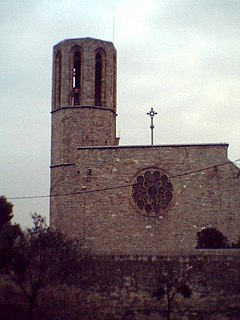
The Monastery of Pedralbes is a Gothic monastery in Barcelona, Catalonia, Spain. It is now a museum, housing permanent exhibitions on its own art and legacy as well as third-party special exhibitions from time to time. The Chapel of St. Michael was restored and re-opened in 2018.
Maties Palau Ferré (1921–2000) was a painter from Montblanc, Catalonia, Spain. He made cubist oil paintings, India ink drawings, as well as ceramics and a few sculptures.
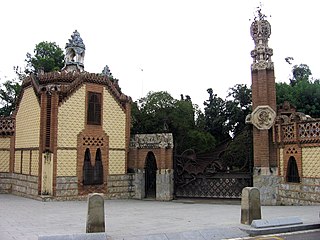
The so-called Pavellons Güell, or Güell Pavilions, is a complex of buildings in the neighborhood of Pedralbes, Barcelona, by the Catalan Modernist architect Antoni Gaudí, built between 1884 and 1887.

The Palau Foundation is an art exhibition centre in the centre of Caldes d'Estrac, in the region of El Maresme (Catalonia). It was opened in May 2003, to exhibit and disseminate the art collection that had been compiled by Josep Palau i Fabre, as well as its archives and library. Of particular importance is its archive and bibliographical collection on Pablo Picasso. The Palau Foundation is part of the Barcelona Provincial Council Local Museum Network and 'Espais Escrits', the Catalan Literary Heritage Network.

CaixaForum Barcelona is an art gallery in Barcelona, Catalonia, Spain. It is sponsored by Barcelona bank "la Caixa", and opened in 2002 in a former factory. CaixaForum is located in the Montjuïc area, on Avinguda de Francesc Ferrer i Guàrdia. The museum houses art exhibits.
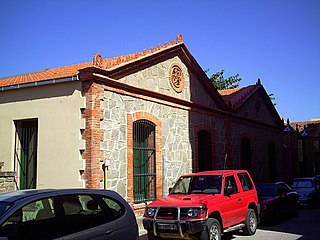
The Premià de Mar Printing Museum, located in the old gas factory of the town, is a museum dedicated to explaining the history of textile printing in Premià de Mar and all of Catalonia. It is part of Science and Technology Museum of Catalonia and the Barcelona Provincial Council Local Museum Network. Its main objective is to expose samples and objects related to textile printing and to explain the techniques used over time, as well as to highlight the important role that this economic activity has played in the past as a driver of industrialisation in Catalonia.
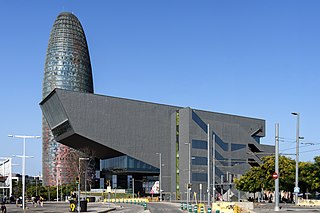
The Museu del Disseny de Barcelona, is a new center of Barcelona's Institute of Culture, which works to promote better understanding and good use of the design world, acting as a museum and laboratory. It focuses on 4 branches or design disciplines: space design, product design, information design and fashion.
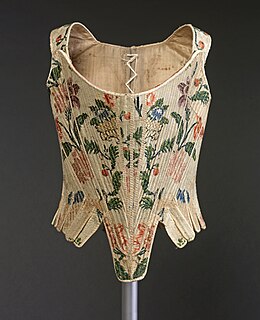
The Museu Tèxtil i d'Indumentària, in English Textile and Clothing Museum, is a museum opened on 1982 and located in the Palau Reial de Pedralbes in Barcelona. The museum possesses countless objects and pieces of major artistic and historical value that make up their collections of garments, fabrics and jewellery. Regarding their collection of clothes, the museum allows you to take a journey through the history of textiles, from the 16th century right up to the modern day. The museum's collections include Coptic, Hispano-Arab, Gothic and Renaissance fabrics, as well as embroidery, a section on lacework and a collection of prints. Also worth mentioning is the jewelry collection, comprising approximately five hundred pieces that were made and produced in Spain.
The Gabinet de les Arts Gràfiques, in English Graphic Arts Cabinet, is a museum opened in 1942 and located in the Palau Reial de Pedralbes in Barcelona. Together with Museu de les Arts Decoratives and the Museu Tèxtil i d'Indumentària is part of the Disseny Hub Barcelona.

Lluís Rigalt i Farriols was a Catalonian landscape painter and graphic artist.
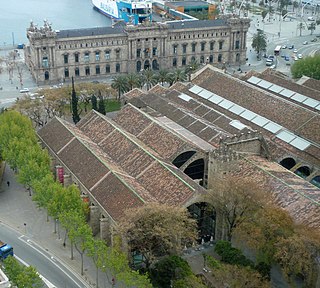
The Maritime Museum of Barcelona is located in the building of Drassanes Reials de Barcelona, the royal arsenal of Barcelona, dedicated to shipbuilding between the thirteenth century and eighteenth century. The first mention of these arsenals date from 1243 in a document indicating the boundaries of the city of Barcelona where it mentions its shipyard.

The following outline is provided as an overview of and topical guide to Barcelona:

Palace of the Viceroy (Barcelona) ; Catalan: Palau del Virrei o del Lloctinent) was a royal residence in Barcelona, Catalonia, Spain. It was also known as the royal palace ; Catalan: Palau Reial) or the Hala dels Draps. It was located in the Pla de Palau, in the center of the Ciutat Vella district of Barcelona. The palace had its origin in a woolen port warehouse of medieval times, until it was converted into a palace in 1652 and became the official residence of the viceroys of Catalonia. It became the Royal Palace and residence of the Spanish Royal Family in Barcelona in 1844. It was destroyed by a fire in 1875.




















